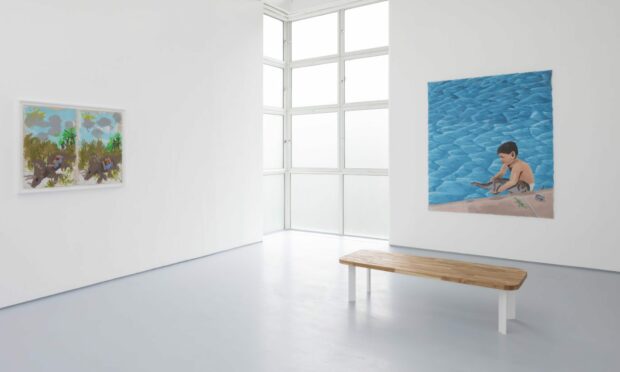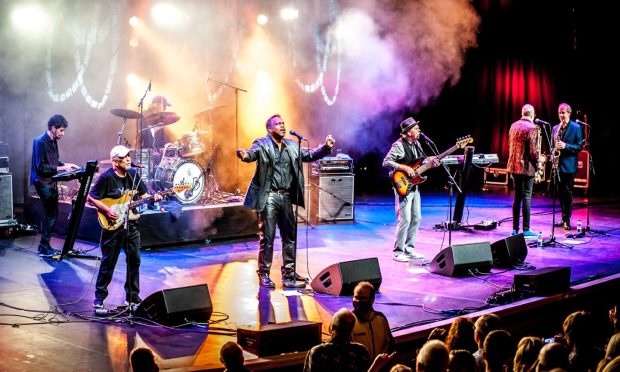If you visit Dundee Contemporary Arts’ current exhibition, you may need to occasionally remind yourself that its subject was struck blind in 2014 due to an HIV-related illness.
All the paintings and video work in Manuel Solano’s debut major UK show – a first overview of their (the artist identifies as transgender) career anywhere – has been created since that life-changing event, telling the story of how they met that challenge head-on.
Reflecting their rage
Some of the Berlin-based, Mexican artist’s striking images appear willfully crude, paint applied speedily with their hands, as on the self-explanatory Giving The Finger.
Made not long after they lost their sight, the piece reflects their rage, something not apparent at the time, Manuel reveals on a Zoom call from their studio.
“The work took five minutes from conception to finish,” they say.
“Up until now, I thought about it as being happy and humorous, but you can see my anger and frustration.
“I was giving the finger to life, to everybody who wasn’t me, who hadn’t just become blind. I was devastated, but I didn’t see how much I put that in my work.”
Adapting to new reality
More recent pieces, though, show how Manuel has come to adapt to their new reality. Take the large-scale canvas Liverpool (named after a Mexico City department store, rather than home of the Beatles).
Its composition, especially the depth of field demonstrating the mall’s expanse, hints at the cooperation developed with studio assistants, though they can still work solo.
Operating in such a fashion has helped Manuel to partly come to terms with their condition, they explain.
“I can never completely accept blindness, because it’s never gonna be comfortable. Every day of my life I’m put in a situation where I hate being blind, but I’m better prepared to deal with it.”
The show’s title, The Top of Each Ripple, comes from conversations Manuel has had about facing problems, such as recreating the effects of water in a pool, and inventive solutions they and their team have devised, using pins, string and even pipe cleaners to create areas in which to paint.
Childhood memories
For the artist, these are less important than their subject matter, how they take memories from childhood and teenage years to examine ideas around identity, especially the influence of family, friends and popular culture.
“I’ve learnt to accept I’ll never make works that look the same as I used to, but I can still be the same artist,” they say.
“Even if it changes a lot visually, it still comes from the same place, the same person. That was an unsettling prospect at first. I foolishly thought things like style were important, but I know now that there is a lot more to my work, the subject matters more than the visual aspect.”
To accompany themes raised in The Top of Each Ripple, DCA is accompanying the show with talks, films and other events, including a screening of high-school comedy Mean Girls and a discussion on the music and performance of Sinéad O’Connor.
The Top of Each Ripple runs at DCA until 20 November.












